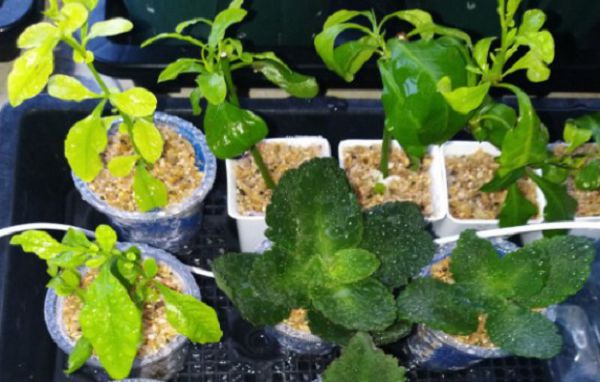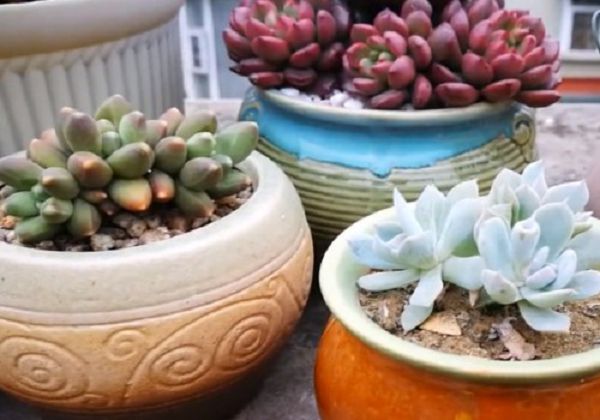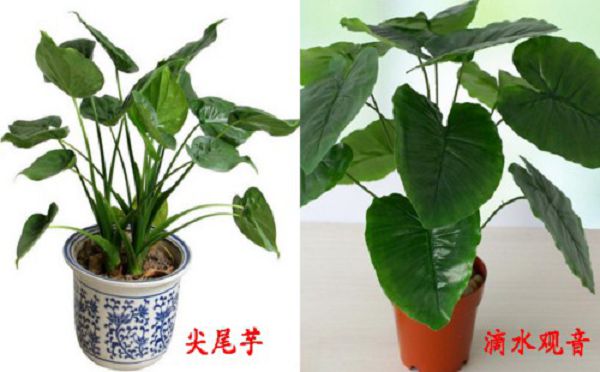Is it okay to insert common soil into longevity flower stems?

Longevity flowers are very suitable for cutting branches, and can not only cut stems, but also cut lateral branches, but also cut flower stems as cuttings, which are usually very easy to survive. And compared with leaf cuttings, the advantages of branch cuttings are more obvious. Branches can generally continue to sprout after rooting, while leaves usually take several months to sprout smoothly after rooting.
However, there are many factors that affect the survival rate of cuttings, which not only require the cutting stems and branches to grow strong and mature, but also affect the rooting and survival of cuttings due to the factors such as temperature, humidity, light and ventilation in the cutting environment. Not only that, the selection of cutting substrate is also very important, so?
Longevity flower is very easy to survive by cutting, but if the substrate is not good, although it can not be said to survive by cutting, it is easy to have a greater impact on its rooting and survival, thus reducing the survival rate. If you use ordinary soil for cutting, there is no problem with survival, but sooner or later.
Because ordinary soil is generally neutral, has a fixed viscosity and poor permeability, and these factors usually only affect the growth of cuttings after rooting and survival, and generally do not play a decisive role in the survival of cuttings. Therefore, even if we use ordinary soil, longevity stem cuttings can survive.
But it is precisely because the ordinary soil permeability is too poor, not loose enough, but also affect drainage, so it is not conducive to seedling root respiration and growth, but also easy to cause matrix stagnant water. Because the root system of the seedling is very young and fragile, and the longevity flower is also resistant to drought and water, it is easy to damage its tender root if it encounters stagnant water in the matrix.
And the capillary root of longevity flower is more, at the same time very fragile, very easy to damage. Whether we usually maintain the management of water and fertilizer, or we transplant into the pot, we should protect its roots, otherwise it will affect its survival.
In order to improve the survival rate of longevity flowers using stem and branch cuttings, we generally need to choose a loose and permeable substrate as the inserting bed, preferably a clean, nutrient-free substrate. Pixel sand, perlite and vermiculite are all very good substrates and can be used as substrates for longevity stem insertion.
These vegetarian substrates contain no or less nutrients, so they are relatively clean and are not easy to cause wound infection or damage to cuttings, so they can greatly improve the rooting and survival rate of cuttings. But at the same time, due to the lack of nutrients in these substrates, it is not suitable for long-term growth of cuttings after rooting, so cuttings should be transplanted into pots in time after rooting and survive, and use fertile, loose, air-permeable and water-permeable soil to plant.
Related
- Fuxing push coffee new agricultural production and marketing class: lack of small-scale processing plants
- Jujube rice field leisure farm deep ploughing Yilan for five years to create a space for organic food and play
- Nongyu Farm-A trial of organic papaya for brave women with advanced technology
- Four points for attention in the prevention and control of diseases and insect pests of edible fungi
- How to add nutrient solution to Edible Fungi
- Is there any good way to control edible fungus mites?
- Open Inoculation Technology of Edible Fungi
- Is there any clever way to use fertilizer for edible fungus in winter?
- What agents are used to kill the pathogens of edible fungi in the mushroom shed?
- Rapid drying of Edible Fungi



